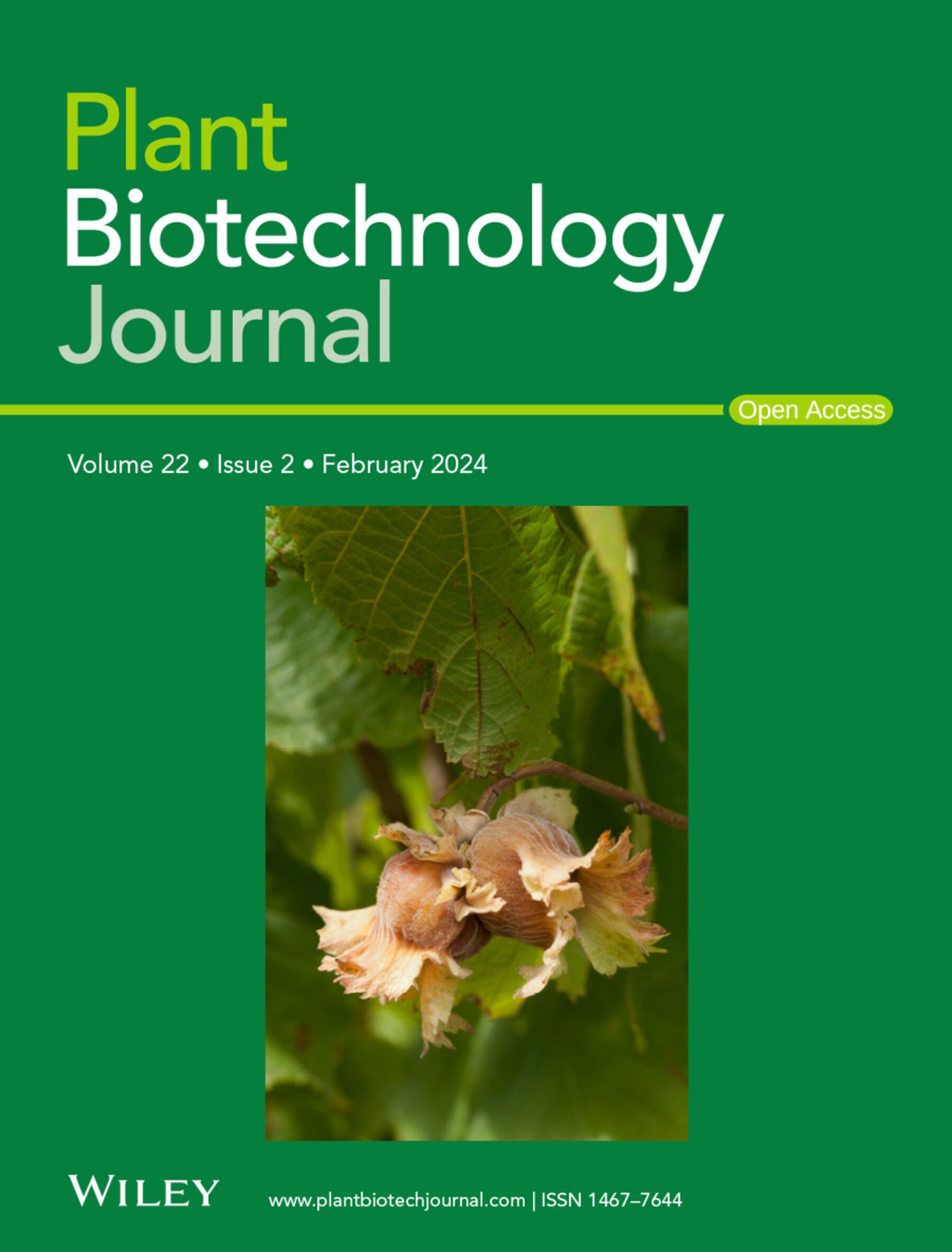KNOX转录因子ClSP激活ClAPRR2调控西瓜深绿色条纹的形成。
IF 10.1
1区 生物学
Q1 BIOTECHNOLOGY & APPLIED MICROBIOLOGY
引用次数: 0
摘要
条纹图案作为西瓜突出的外在特征,具有显著的表型多样性,通过消费者偏好直接影响西瓜的商业价值。然而,西瓜这一重要农艺性状的遗传和分子机制尚不清楚。在本研究中,我们发现深绿色条纹(DGS)的总叶绿素含量显著高于浅绿色条纹(LGS)和网状绿色条纹(RGS)。此外,DGS的叶绿体数量和大小显著增加。遗传分析发现,KNOX TF ClSP最有可能调控西瓜深绿色条纹的形成,其功能破坏严重损害了叶绿素的生物合成和叶绿体的发育,使深绿色条纹转变为网状条纹。通过转录组分析,我们确定了大约94个不同表达的基因(DEGs),它们的启动子中含有KNOX TF结合的顺式元件“TGAC”。在这些基因中,拟南芥伪响应调控因子2-LIKE (APRR2-like) TF ClAPRR2的表达模式与ClSP的表达模式密切相关,在LGS中的转录表达较DGS显著下调。利用Y1H、GUS活性、DLR和EMSA检测,我们证实ClSP通过启动子结合激活ClAPRR2的转录活性。总之,我们提出了ClSP-ClAPRR2模块的潜在工作模型,该模块调节西瓜果实叶绿素合成和叶绿体发育,为条纹模式形成的机制提供了新的见解。本文章由计算机程序翻译,如有差异,请以英文原文为准。
The KNOX transcription factor ClSP activates ClAPRR2 to regulate dark green stripe formation in watermelon.
As a prominent external feature of watermelon, the stripe pattern exhibits remarkable phenotypic diversity, directly impacting commercial value through consumer preference. However, the genetic and molecular mechanisms underlying this important agronomic trait in watermelon remain poorly understood. In this study, we discovered that the total chlorophyll content in dark green stripes (DGS) was significantly higher than that in light green stripes (LGS) or reticular green stripes (RGS). Moreover, the number and size of chloroplasts were significantly increased in the DGS. Genetic analysis identified the KNOX TF ClSP as the most likely candidate for regulating watermelon dark green stripe formation, whose functional disruption substantially impaired chlorophyll biosynthesis and chloroplast development, converting dark green stripes into reticulate stripes. Through transcriptome analysis, we identified approximately 94 differently expressed genes (DEGs) that contain the KNOX TF binding cis-element 'TGAC' in their promoters. Among these genes, the expression pattern of ARABIDOPSIS PSEUDO RESPONSE REGULATOR 2-LIKE (APRR2-like) TF ClAPRR2 closely mirrored that of ClSP, displaying significantly down-regulated transcriptional expression in LGS compared to DGS. Utilizing Y1H, GUS activity, DLR and EMSA assays, we confirmed that ClSP activates the transcriptional activity of ClAPRR2 through promoter binding. Collectively, we propose a potential working model for the ClSP-ClAPRR2 module, which regulates the chlorophyll synthesis and chloroplast development in watermelon fruits, providing new insights into the mechanisms underlying stripe pattern formation.
求助全文
通过发布文献求助,成功后即可免费获取论文全文。
去求助
来源期刊

Plant Biotechnology Journal
生物-生物工程与应用微生物
CiteScore
20.50
自引率
2.90%
发文量
201
审稿时长
1 months
期刊介绍:
Plant Biotechnology Journal aspires to publish original research and insightful reviews of high impact, authored by prominent researchers in applied plant science. The journal places a special emphasis on molecular plant sciences and their practical applications through plant biotechnology. Our goal is to establish a platform for showcasing significant advances in the field, encompassing curiosity-driven studies with potential applications, strategic research in plant biotechnology, scientific analysis of crucial issues for the beneficial utilization of plant sciences, and assessments of the performance of plant biotechnology products in practical applications.
 求助内容:
求助内容: 应助结果提醒方式:
应助结果提醒方式:


